 St Francis of Assisi, Mill Park, VIC
St Francis of Assisi, Mill Park, VIC
Introduction
The stained glass window entitled The Canticle of the Sun in St Francis of Assisi Catholic Parish, Mill Park, VIC, was installed almost twenty years before Pope Francis was elected in March 2013.
Fortuitously, the window highlights two concerns close to the heart of the current Holy Father: a renewed appreciation and respect for God’s creation explored in Francis’ encyclical Laudato si’ (2015), and a deep love and respect for those who live in poverty or who, like St Francis of Assisi (c. 1181-1226), have abandoned the trappings of wealth to follow Christ more closely.
Australian glass maker Christopher John, who produced the stained glass window, studied Art and Design at the Prahran College of Advanced Education in the late 1970s. He subsequently completed a Post Graduate Diploma in glass painting at the Chisholm Institute under the supervision of Klaus Zimmer.
In 1989, Christopher John established his first glass practice called Sacred Art Studios, where he worked primarily in ecclesiastical stained glass. He now operates under a new banner called Red Phoenix Glass on the Gold Coast in Queensland, and continues to have a strong working relationship with architects and clients in Melbourne and other parts of Australia.
The following text and photos of the window in St Francis of Assisi Parish have been provided by Christopher John.
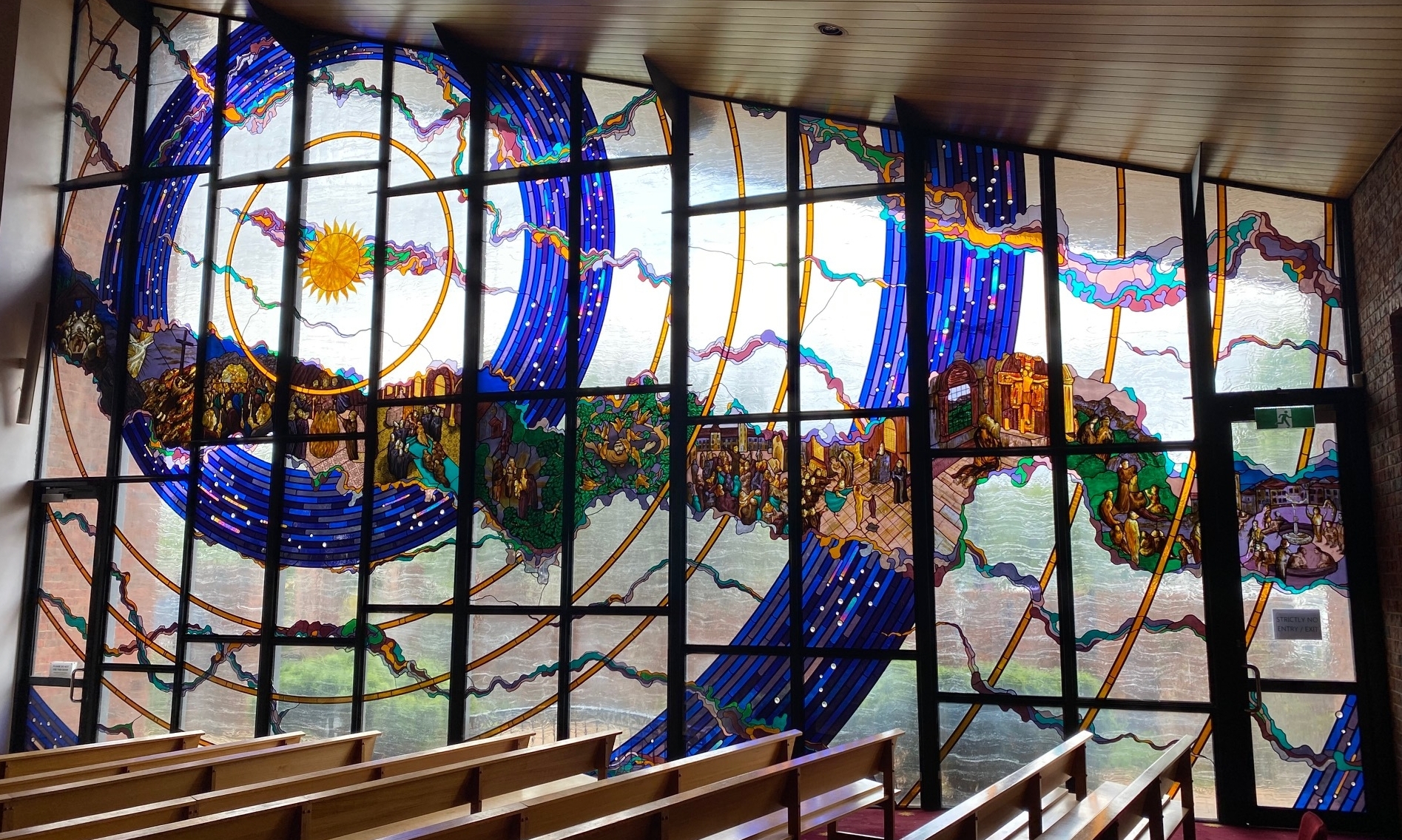
Detailed Commentary
Praise be you, my Lord, with all your creatures,
especially Sir Brother Sun,
who is the day through whom you give us light.
Praise be you, my Lord, through Sister Moon and the stars.
In the heavens you have made them bright, precious and fair.
St Francis of Assisi, Canticle of the Sun
The window entitled The Canticle of the Sun was commissioned in 1994. The architects Smith and Tracey had designed a strikingly contemporary building with a large north-facing wall of glass looking first onto a contemplation garden and then beyond that to a car park and school play-ground.
The brief had been a simple one; thematically to reflect something about Saint Francis and, practically, to screen the car park and school from sight. There was also the question of retaining as much light as possible, as the wall of glass measured 8 x 12m and was responsible for much of the light entering the worship space.
The stained glass committee under the leadership of Parish Priest, Fr Eugene Ahern, selected three glass artists recommended by the architects, and invited each to submit an expression of interest entailing a concept design and budget proposal. The committee selected my design based upon Saint Francis of Assisi’s ode to creation, The Canticle of the Sun.
The central motif is an unbounded golden sun, often used as a symbol of Jesus, ‘the light of the world’ and the ‘sun of righteousness’. The physical sun gives life and light to the world, sustaining and nourishing all its creatures, as too does Christ through his spiritual nourishment together with the Holy Spirit.
The great arcs of stars and comet tails encircling the sun place Christ at the centre of creation and the cosmos itself, as too is he the centre of our lives and being. Across the width of the window is a 12m frieze that meanders in an ascending diagonal towards the altar and sanctuary.
Contained within it are twelve scenes from the life of Saint Francis, arranged in a similar way to the Stations Cross of Christ’s passion and death, though in this case traversing Saint Francis’s life from a young man to his final days in Assisi. In each scene, there is a critical incident or turning point, shaping Francis into the saint he was to become.
Moving from the rear of the church towards the altar, the stations are as follows:
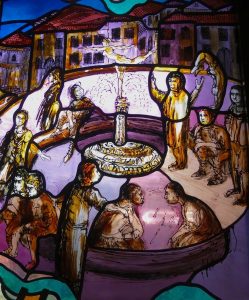


- Saint Francis as a young man revealing himself as the ‘King of Assisi’
- Saint Francis embracing a leper
- Praying before the crucifix of Saint Damiano


- Disrobing before the local Bishop and disowning his natural father
- Preaching to the people of Assisi in the market place

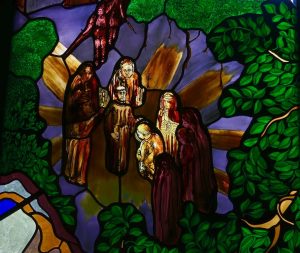
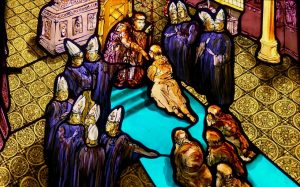
- Giving his famous sermon to the birds
- Accepting Saint Clare into what was to become the Poor Clare religious order
- Kneeling before Pope Innocent III in Rome
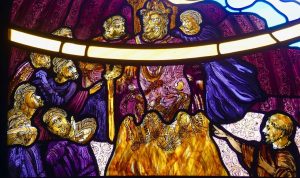

- Appearing before the Sultan of Egypt in the Middle East
- Inaugurating the tradition of the Christmas Nativity



- Receiving the stigmata
- Dying, surrounded by his closest disciples
Cognisant of the fact that the church is alongside a primary school, the twelve scenes are a lively rendition of Saint Francis’ life, painted in a fresh, gestural manner, unconstrained by the conventional rules of art, much like the life of this very unconventional mediaeval saint.
Our aim was to keep the interior of the church bright and light filled. So the vast majority of the background is a German glass named Alt Deutsche. The glass has the appearance of a clear flowing stream with ripples, rivulets and bubbles within it. This blocks its transparency but allows natural daylight to pass through. The frieze and the arcs of stars and comets are held within this sea of silvery white making striking areas of intense colour and detail.
Introduction by Paul Taylor, Executive Secretary of the Bishops’ Commission for Liturgy; detailed commentary by stained glass artist, Christopher John
